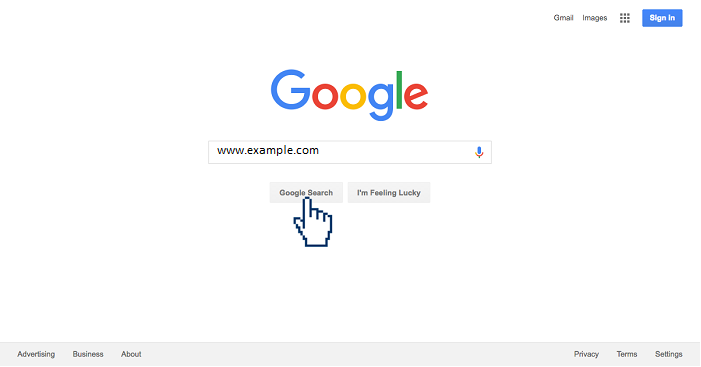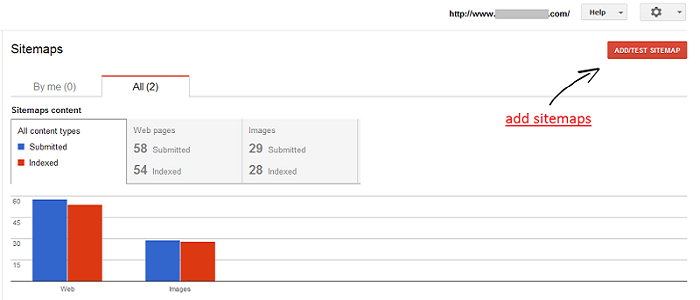
Who doesn’t want more organic search traffic to their sites? The definite answer is none.
Organic search is absolutely critical as it is the source of 64% of the total traffic to a website. There will be no value of this number if search engines don’t index your site. It’s as simple as that.
What is indexing of a website?
Indexing is referred to search engine recording your web pages and showing it up every time a user look for the information similar to your web pages. Mostly, when a bot of search engine arrives at your website, it starts crawling. Based on ‘noindex’ or ‘index’ meta tags, the bot adds pages in the search engines with index tags.
How do you get your website indexed by all major search engines?

There are two ways to do that. One is to create a WordPress website and sit back and relax, while indexing happens naturally (which will take a long time) and the other one is putting some efforts and make it happen. If you’re ready to implement the second method, then continue reading.
1. Understanding the working of search engines:
You won’t be able to do much if you don’t know how exactly the major search engines like Google Yahoo, Bing and other works. Almost all search engines count on spiders that use algorithms to do the indexing which is not difficult to understand. The work of spiders is to find out the new content on the internet and figure it what it is all about. A new content could be from anywhere, an existing page, a new site or a new blog.
In earlier days, you could force a bot to index and rank your webpages based on how many times a particular search keyword is used. But today, doing this will get you penalized. It doesn’t mean that keywords no longer helps a website getting indexed on the search engines but with that, you have to take care of few other things like social signals, valid codes, quality incoming links and much more. All of this won’t matter until spiders tell the search engines where to begin and that’s when indexing comes in.
Imp: Spiders will note down every time a new document and changes added to a webpage, and it’ll process it and note down the location. When a user searches for the information associated with the similar keywords, Spiders get to the work and find the links on pages and add them to the list of crawled pages.
So, it’s always important to check a recently published article to know that Google has already found it. You can use a site:domain.com to search the same and ensure your page is easy to find.
2. Add articles and blogs
Write in-depth and high quality blogs regularly and you’ll see why it’s worth writing. High percentage of the retailers say their customers are from the blog posts, and more than 60% of the people buy products or services based on the blogger’s recommendations.
It’s very simple and for every industry, niche and business. Just create a blog post about a product, add some high pixel images and links to the page as this will help product page to get indexed and crawled by search engine bots.
Content Strategy
As we have already mentioned the value of blogs, it’s to your own benefit to have a good content marketing strategy. A well-written content helps you focus on increasing conversions of the leads. It doesn’t have to be difficult or complex. Simply:
- Write GPs (Guest posts) and submit it the sites similar to your niche
- Create PRs (Press releases) and publish them on PR sites.
- Blogs on article directories.
- Prepare videos and host on major platforms like Youtube or Vimeo.
Note: Don’t try shortcuts by posting your content on spammy sites as Google will then consider your site as spammy too.
3. Use Google Analytics

You need basic analytical tools to know the performance of your website and what better than Google analytics suffice to this need?
Setting up Google Analytics suggests Google that your website is on the internet and may help in triggering the indexing and crawling process. It’s the additional advantage, but you need it for knowing the total number of user visits, the time length spent on a page, pageviews and much more.
Also, you can use it for advanced tricks like tracking conversions and setting goals.
4. Submitting To Google Search Console (GSC)
Image “google search console” Here
GSC is a mishmash of SEO tools and reporting that offers configuration and data to control your website by providing you direct insight on how Google is indexing your website. Check out following reasons why should you use this tool as an imperative part of your website.
Helps bloggers:
- To monitor visibility on search engines and ‘404 not found’ errors.
- To know the keywords, their sites are ranking for.
- In Improving the sire indexing and crawling
- To monitor if a website is indexable by bots
- Issues that need fixing like HTML improvements
- Submitting the sitemap to Google
5. Submitting Website’s URL to Search Engines
On Google, you can submit your website’s URL by logging in to your account and navigate to “submit URL” found in Webmaster Tools. Then enter the URL and click on the option that says, “I’m not a robot”. Now, click submit and your website will get submitted to Google. Similarly, you can add the URL to Bing which will automatically submit it to the Yahoo.
6. Sitemap

Sitemap is a list in XML format of every page which let the search engines know that something’s changed when you upload a new page or edit a page on your website. They significantly help your website to get crawled quickly. If you have submitted a Sitemap, it means Google knows about your URL. You can follow instructions of Google on how to add an HTML file. Once you have added your website, go to the Dashboard, then to that website and click on “Sitemaps” and add it on your website.
There is no restriction on how many times you can submit the sitemap to Google but just ensure that every time you are updating the content or images, add a sitemap.
7. Social Media
It is one of the most effective methods to generate the traffic on your website. You can start with StumbleUpon, Facebook, Twitter, Google Plus, and the other main search engines for faster indexing of your content. Not only social media pages but also create social media profiles on YouTube channels, LinkedIn profiles or company pages, Facebook and Twitter pages and Pinterest profiles to add links that point to your website.
Bonus:
Perhaps, you know that if you submit a URL to a blog directory, it’ll help your site indexed by not and will easily be found by potential users, and if you know the right way to do it, it’ll make indexing quicker than usual. Submit your URLs to only best authority and industry blogs if you need to get in the top search results of search engines. Not only it will open up your content to new traffic but also helps you with incoming links that are easy to crawl and index by search engines. Isn’t that you need? Also, You might want to know about the TopRank and Technorati which are two of the top blog directories across the world to submit your RSS feed and blogs
Now, you have seven efficient methods for getting your website indexed by search engines to drive more and more traffic.
It isn’t an exhaustive list as there are techniques like bookmarking, commenting on various forums and much more. The point is there are various techniques and methodologies arises on the daily basis when it comes to search engine ranking. So, stay updated and use everything you can for better ranking of your website. Also, let us know the techniques that you use to generate traffic in the comment section:
Author Bio: Catherrine Garcia is an experienced Web Developer at HostingFacts and a passionate blogger. She loves to share her knowledge through her articles on web development and WordPress.













